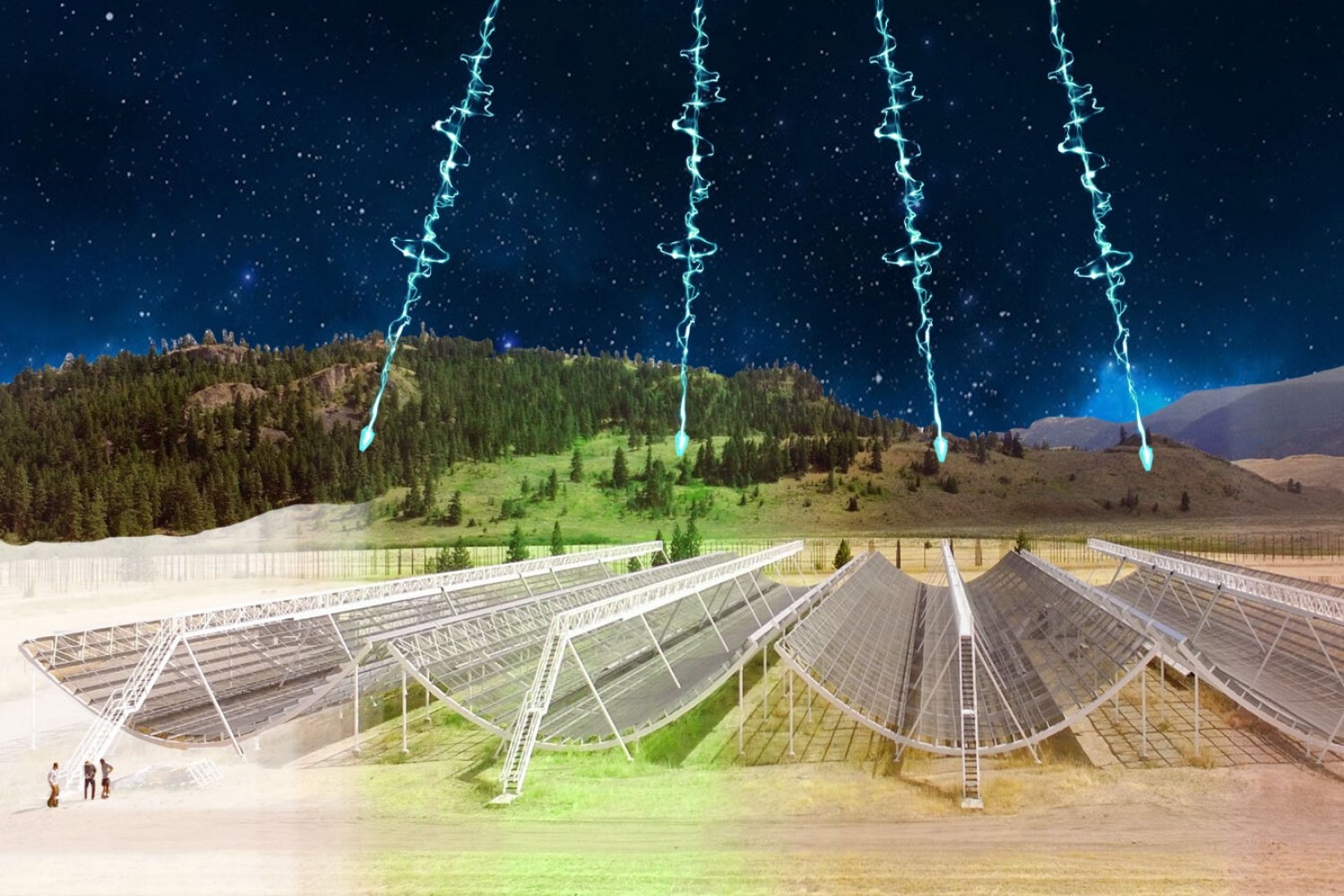
Study doubles the number of known repeating fast radio bursts
Statistics tools support the idea that all radio bursts may repeat if observed long enough.
Fast radio bursts (FRBs) are repeating flashes of radio waves that remain a source of mystery to astronomers. We do know a few things about them: FRBs originate from far outside the Milky Way, for instance, and they're probably produced from the cinders of dying stars. While many astronomical radio waves have been observed to have burst only once, some waves have been seen bursting multiple times — a puzzle that has led astronomers to question if these radio waves are similar in nature and origin.
Now, a large team of astronomers, including several from the MIT Kavli Institute for Astrophysics and Space Research and the MIT Department of Physics, have collaborated on work to decipher the origin and nature of FRBs. Their recent open-access publication in The Astrophysical Journal reports the discovery of 25 new repeating FRB sources, doubling the known number of these phenomena known to scientists to 50. In addition, the team found that many repeating FRBs are inactive, producing less than one burst per week of observing time.
The Canadian-led Canadian Hydrogen Intensity Mapping Experiment ( CHIME ) has been instrumental in detecting thousands of FRBs as it scans the entire northern sky. So, astronomers with the CHIME/FRB Collaboration developed a new set of statistics tools to comb through massive sets of data to find every repeating source detected so far. This provided a valuable opportunity for astronomers to observe the same source with different telescopes and study the diversity of emission. “We can now accurately calculate the probability that two or more bursts coming from similar locations are not just a coincidence,” explains Ziggy Pleunis, a Dunlap Postdoctoral Fellow at the Dunlap Institute for Astronomy and Astrophysics and corresponding author of the new work.
The team also concluded that all FRBs may eventually repeat. They found that radio waves seen to have burst only once differed from those that were seen to have burst multiple times both in terms of duration of bursts and range of frequencies emitted, which solidifies the idea that these radio bursts have indeed different origins.
MIT postdoc Daniele Michilli and PhD student Kaitlyn Shin, both members of MIT Assistant Professor Kiyoshi Masui’s Synoptic Radio Lab, analyzed signals from CHIME’s 1,024 antennae. The work, Michilli says, “allowed us to unambiguously identify some of the sources as repeaters and to provide other observatories with accurate coordinates for follow-up studies.”
“Now that we have a much larger sample of repeating FRBs, we’re better equipped to understand why we might observe some FRBs to be repeaters and others to be apparently non-repeating, and what the implications are for better understanding their origins,” says Shin.
Adds Pleunis, “FRBs are likely produced by the leftovers from explosive stellar deaths. By studying repeating FRB sources in detail, we can study the environments that these explosions occur in and understand better the end stages of a star’s life. We can also learn more about the material that is being expelled before and during the star’s demise, which is then returned to the galaxies that the FRBs live in.”
In addition to Michilli, Shin, and Masui, MIT contributors to the study include physics graduate students Calvin Leung and Haochen Wang.
Reprinted with permission of MIT News